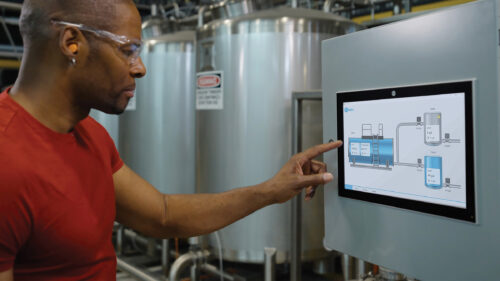When machines talk, will you listen?
With MTConnect, a machine tool acts as a web server to share information about itself. An upcoming OPC-UA interface standard adds control, as explained in Control Engineering's "IT & Engineering Insight" column, February 2010.
Dennis Brandl, Control Engineering IT & Engineering Insight columnist
Modern industrial devices are very smart, with internal processing power rivaling that of high end servers. The devices may run hundreds of control loops, collect megabytes of data per day, have built in HMI capability and Ethernet network access. However, many intelligent devices do not easily share their information.
Suppliers of one class of industrial devices, machine tools, are working to change this situation. Machine tools are the devices that cut and shape metal pieces and include lathes, milling machines, shapers, planers, drill presses, and ancillary devices to take measurements, move pieces and attach/detach cutting tools. These devices are often part of an assembly process and, in many manufacturing processes, they are the bottleneck devices, so considerable effort is made to keep the tools busy and in good operating order. To make this possible, machine tool vendors and end users are collaborating through the MTConnect Institute ( www.mtconnect.org ) to define a standard interface. The MTConnect Institute is also working on interface specifications for attached robots, gages, and adapters.
Machine tools maintain information about their current status, power use, spindle speeds, positions and controller modes. The MTConnect specification defines a standard model for identifying and accessing this information. In the MTConnect model devices contain components (such as power, controller status and axis information), components may contain other components (such as an axis containing three directions), and components contain data-items (such as a position).
MTConnect uses a REST model interface, which is short for representational state transfer. This is a lightweight interface protocol using HTTP GET services. In the REST model, a device only services single requests, and it is the responsibility of the client application to maintain any session or transaction information.
The current MTConnect specification, Version 1.0.1, is a read-only interface. A machine tool acts as a web server and responds to HTTP GET requests with an XML file. The client application, or client side script, can make three basic requests:
The components and data items for the device (a “probe” command),
A snapshot of the device’s data items’ most recent values (a “current” command), or
Historical samples and events stored within the device (a “sample” command).
An MTConnect C++ Agent SDK is available for download, to help with implementing MTConnect. Integration of the MTConnect interface through industrial or business networks is straightforward because it uses only standard HTTP ports and protocols.
While obtaining information from machine tools is valuable, it is also important that the tools can be controlled and configured as part of an overall production strategy. The REST model does not easily support security, state control, time synchronization, and event publishing. To address these issues, the MTConnect Institute is also working with the OPC Foundation ( www.opcfoundation.org ) to develop an OPC-UA interface using the MTConnect device model.
OPC-UA (Unified Architecture) is based on the SOAP (Simple Object Access Protocol) interface model. While an OPC-UA interface is more complex than the REST model, it does provide functionality that cannot be easily implemented using a REST interface. Specifically OPC-UA provides a robust security model and common methods to download device programs and parameters as part of a shop floor wide control program. ANSI C and Java SDKs are available at www.opcfoundation.org to help in implementing OPC-UA clients and servers.
MTConnect is available now. With support from end users, there could be an OPC-UA/MTConnect interface standard available in 2010. If you have machine tools in your production process and want to connect them into your shop floor wide control strategies, then look at MTConnect and OPC-UA to solve your connection problems.
– Control Engineering ‘s IT & Engineering Insight column, February 2010.
Read other Dennis Brandl columns on IT & Engineering .
Author Information
Dennis Brandl is president of BR&L Consulting in Cary, NC, www.brlconsulting.com . His firm focuses on manufacturing IT. Contact Dennis at dbrandl@brlconsulting.com .
Do you have experience and expertise with the topics mentioned in this content? You should consider contributing to our CFE Media editorial team and getting the recognition you and your company deserve. Click here to start this process.





